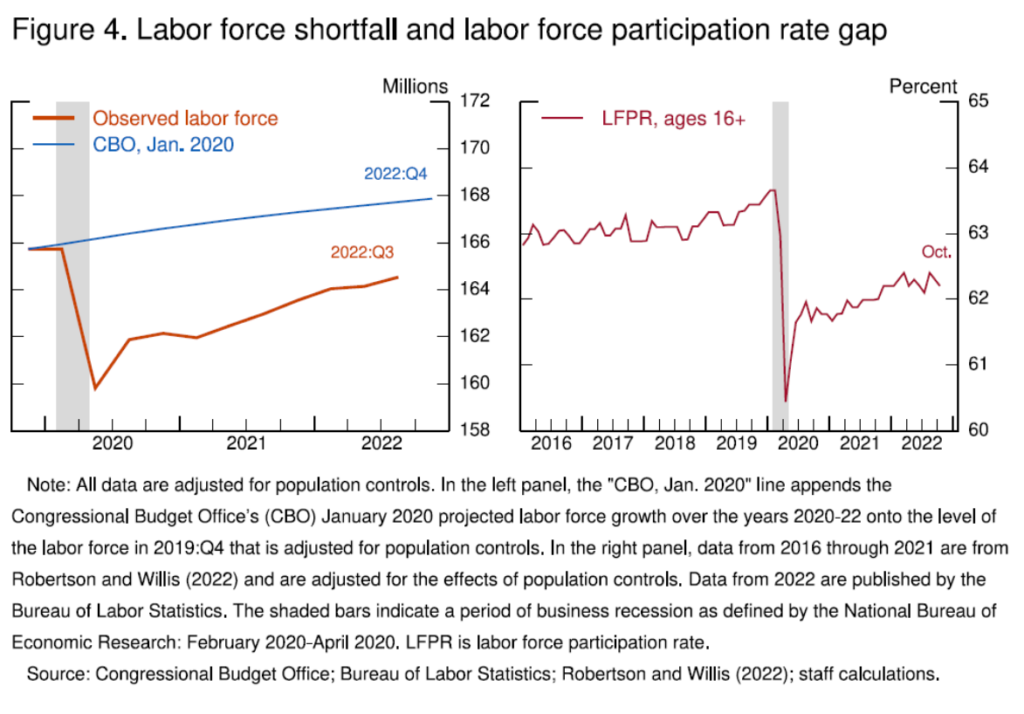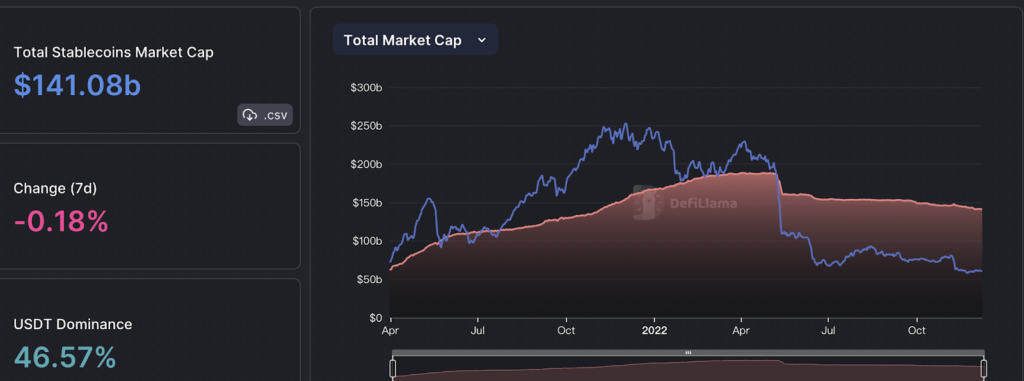After several large institutions filed for bankruptcy, the Bitcoin prices fluctuated around $16,000 with temporary hopes of a rebound. However, MEXC Vice President, Andrew Weiner, believes that the current flow of markets still needs to show any major sign of a rebound. He added that any real rebound might need macroeconomic support and industry breakthrough.
State of Macroeconomics
Interest Rates
On November 30, 2022, US Fed Chair, Jerome Powell, shed light on the final meeting of the Federal Open Market Committee (FOMC) set to take place around mid-December. He implied that the eighth FOMC meeting would likely raise the interest rate by 50 basis points, which is lower than the earlier four rate hikes of 75 basis points.
Andrew quotes data from the US Dept of Labor showing that the unemployment rate was much higher than the 3.5% that had prevailed before the pandemic without any major signs of fiscal tightness. Employment data showed a shortage of millions of jobs from optimum levels.
Labor Force and Recession
Further, he added that during the pandemic, there was a significant yet persistent shortfall in labor participation. The gap is so huge that it’s unlikely to close anytime soon.

He said that fuel and non-fuel imports to the US had fallen alongside manufacturer imports in recent months. The core goods inflation has fallen more than 3% since early 2022. According to the MEXC Vice President, this data pointed out that the upcoming recession was inevitable.
Markets supported the prediction as people were increasingly betting (from earlier 66% in favor to 77%) for a 50 basis point hike in the FOMC meeting. Bitcoin rose by 1% to reach $16,982, and US Stocks soared, with the NASDAQ index rising by 4% following Jeremy Powell’s speech. Other indexes including DJIA and S&P 500 surged by about 2% and 3% respectively.
The MEXC crypto exchange CEO highlighted that Bitcoin was decoupling from traditional stock markets considering their dissimilar movements. The cryptocurrency prices were becoming less affected by the FOMC actions.
Earlier in January 2022, FOMC began discussing interest rate hikes. The core issue was to absorb excess USD printing in the market during the pandemic. But, Weiner believes that since the first rate hike in March 2022, crypto markets were increasingly unaffected by rate hikes.
| Date | March 26 | May 04 | June 15 | July 27 | Sept 21 | Nov 02 | Nov 30(implied rate hike) | |
| Rate Hike Basis Points | 25bp | 50bp | 75bp | 75bp | 75bp | 75bp | 50bp | |
| BTC Price Fluctuation after Rate Hike | 10.59% | -49.45% | -30.3% | 13.8% | -9.5% | 3.5% | 1% |
He presented an anomaly in stock markets during the 1950s where sell-offs occurred despite lower interest rates, contrary to the expected situation. The anticipation is that lower interest rates means more money to buyers leading to a bullish market.
Additionally he said that recessions followed rate hikes. The average correction during rate hikes was around 15%. In contrast during a recession, the stock drawdown was almost double even if it coincided with a rate hike cycle.

Andrew noted that inflation conversion usually brings economic recession as evident from the graph above. Further, after quantitative easing, US stocks often declined because Fed releasing liquidity shows that the economy might be in a bad shape. He stressed on the fact that we should worry more about the recession than a rate hike cycle.
But can BTC (and therefore crypto) decouple completely from the stock markets and venture out independently?
Current State of The Industry
Stablecoin Market
Talking about stablecoin market cap, According to MEXC Global VP this was an important sign of market reversal. The markets rebounded after each big crash but these reversals were temporary. Yet, the general trends remain bearish. He added that a major reversal would see that the market cap would expand significantly, indicating new funds entering the market.

According to DeFi llama, the stablecoin sector had a market cap of around $140 Billion, an over 50% loss since the peak. There is no sign of any trend reversal in this metric to confirm market reversal yet.
Total Value Locked (TVL) in DeFi
Weiner noted that the TVL is also a good indicator to show any market reversal. The current TVL is around $42 Billion. Roughly flat TVL indicates that no new capital has been injected into the markets.

Since last week the total TVL increased by $630 Million, and the weekly increase was by 1.5%. Ethereum’s TVL rose by 3.72%. Solana’s TVL gained 6.97% after three weeks of decline but only accounted for 0.72%. BNB Chain’s TVL fell by 4.02%. For the Layer-2 solutions, Arbitrum gained 2.25%, Polygon rose by 0.94%, Avalanche rose by 3.18%, and Optimism fell by 1.16%.
FTX Aftermath
Andrew notes that there were significant threats from institutional collapse as well. Large institutions dominated most of the liquidity in the crypto markets. According to him, worse was that these institutions, like Alameda Research, Wintermute, and Genesis, lost funds in the FTX collapse. When Alameda announced a suspension of trading, market liquidity plummeted. Retail investors also panicked and sold off their assets. These conditions further increased the liquidity crunch.
He pointed out that Alameda had dozens of investments and acted as their market maker. When it suspended trading, its market liquidity collapsed. The overall collapse of FTX withdrew more than 1/8th of market liquidity.
Genesis, Grayscale, and DCG
Another curious case pinned down by Andrew was that of the Digital Currency Group. Both Genesis and Grayscale belonged to the DCG group. Genesis suffered a $1 Billion loss, and Grayscale’s GBTC fund also lost subscribers due to its negative premium. Andrew expects further market fall if GBTC funds are redeemed.
When to Expect the Real Reversal
The US Treasury bonds’ annualized return is at 4.7%, while DeFi returns are at 2%.The inversion of these two yields may trigger further outflow from crypto towards more traditional markets.
MEXC Global VP expects the financial markets to be optimistic till the inflation subsides. However, the crypto markets typically recover ahead of financial markets. The cycle for US Financial markets was around 12-15 years, while for crypto markets (Bitcoin), it is 3-4 years. The market turning point will mostly occur once the macroeconomy stabilizes.
Another critical factor for market reversal was that of de-leveraging. The prosperity of a bull market is highly correlated with de-leveraging. Andrew noted that 3AC borrowed a lot of money and invested them taking huge leverage. In March 2022, its AUM was $10 Billion, and its portfolio included Avalanche, Solana, Polkadot, and Terra. Following its bankruptcy, Bitcoin fell over 30%.
Weiner noted that crypto markets are often more leveraged, even by a side-by-side comparison. Therefore the process of deleveraging looks more violent than typical financial markets. Near the reversal, a long period of volatility will result in a rebound.
He adds that the development of a bull market is inseparable from the birth of new assets and scenarios. New public chains, more mature Layer-2s, infrastructure improvement, etc., will lead to a more robust market. Finally, there is a need for breakthrough technology in a bull market.
Disclaimer: Any information written in this press release or sponsored post does not constitute investment advice. Thecoinrepublic.com does not, and will not endorse any information on any company or individual on this page. Readers are encouraged to make their own research and make any actions based on their own findings and not from any content written in this press release or sponsored post. Thecoinrepublic.com is and will not be responsible for any damage or loss caused directly or indirectly by the use of any content, product, or service mentioned in this press release or sponsored post.
Source: https://www.thecoinrepublic.com/2022/12/22/mexc-vp-says-crypto-markets-still-need-time-to-rebound/
